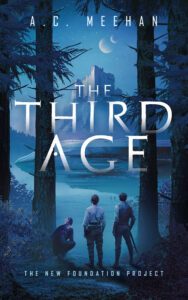I’ve written before about Scrivener, the writing software I use. I do most of my planning, drafting, and editing digitally. I like the convenience of it, from the search tools to the magic of cut, paste, and undo. I like that I don’t have to struggle to read my own handwriting. But there are things I miss: the satisfaction of the growing pile of pages, the feeling of tangible progress, the different way the brain engages with pen and paper. The problem is my brain was trained with handwriting and physical books, but I’ve been seduced by the benefits of digital tools. Consequently, my brain doesn’t quite know how to cope with the monumental digital effort of making sense of a rough draft of well over 250K words.
There has been so much has been written about the differences between generations, from fact to farce, that it’s hard not to admit there’s something to it. I am a card-carrying member of Gen X, and so much of what is ascribed to people born in those years feels true to me. “Generation X is a term born from generational theory in the early 1990s, a time when X symbolized an unknown variable or a desire not to be defined,” according to this website. No one knew what to make of us, or what to expect from us, and I guess we leaned into that.
However, I also think it’s an apt moniker for the transitions we represent. We come between the baby boomers and the millennials, and sometimes it feels like the Star Wars trash compactor scene. (We’re sometimes called the “Forgotten Generation” because being the small generation between those two juggernauts, we’ve been a little overlooked. Middle-child syndrome for a whole generation.) We are considered the first generation of digital transition.*I think the AI generation is going to take it on the chin, too, in terms of being born into a way of doing things that is gone by the time they are adults. If not sooner. For me, sometimes I wonder if maybe I haven’t quite completed the metamorphosis.
I was young enough when the first personal computers came out that I was excited rather than alarmed. I learned cursive and not typing in school, but taught myself touch-typing with a computer game. Cool things came along in the analog world, too, of course: sticky notes in 1980. Gel pens, 1982. (Chicken McNuggets, 1983.)** Also DNA fingerprinting, the space shuttle, disposable cameras, stealth planes, the Walkman, and, uh, Macintosh. But let’s stay focused here.
And now I’m working with this long, complex, digital draft, and I have impulses toward paper and handwriting as a way to organize my thoughts and my efforts. There are sentences and scenes that need to be cut, with digital scissors, but I find it challenging to keep track of the scraps when I’m not quite ready to throw them out. If I move a certain scene or paragraph, there are connections and sequences that need to be adjusted—but I’m loathe to make those changes before I know that where I’ve put that text is where I’m going to leave it.
So I’m doing a hybrid thing, as a good Gen Xer naturally would.
I won’t print it out yet—it’s still too long and too messy and I don’t want to use trees that way. So I handwrote the key points and a summary of each scene on an index card, with cards of different colors for each viewpoint. Now I can rearrange and shuffle scenes and reflow the whole thing without touching a sentence. I’m using (real) paper to help me wield my (metaphoric) scissors efficiently. It also provides a nice opportunity for my cat to help me decide what to cut.
I can do versions of all of this in Scrivener, but there’s something about externalizing this work that makes it easier to grasp. Word counts and file sizes are also good indications of length and balance, but that becomes a statistical thought process. Seeing that there are so few blue notecards in the stack is a more visceral way to make the same observation. And if it turns out that there’s a card that doesn’t fit, I can just pull it out and set it aside to reconsider later.
The funny thing is, after I wrote out all the cards, I promptly typed the summaries into Scrivener and linked them to the files.




